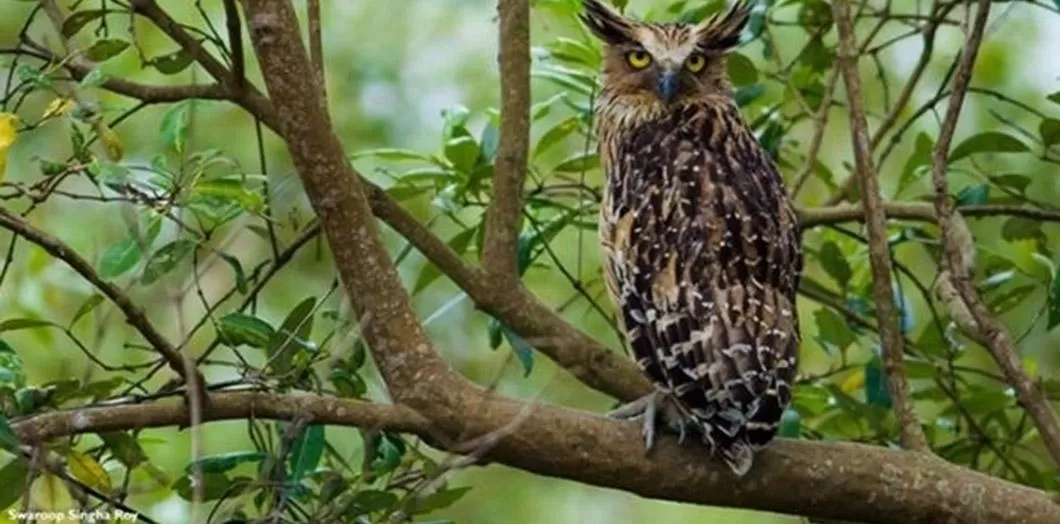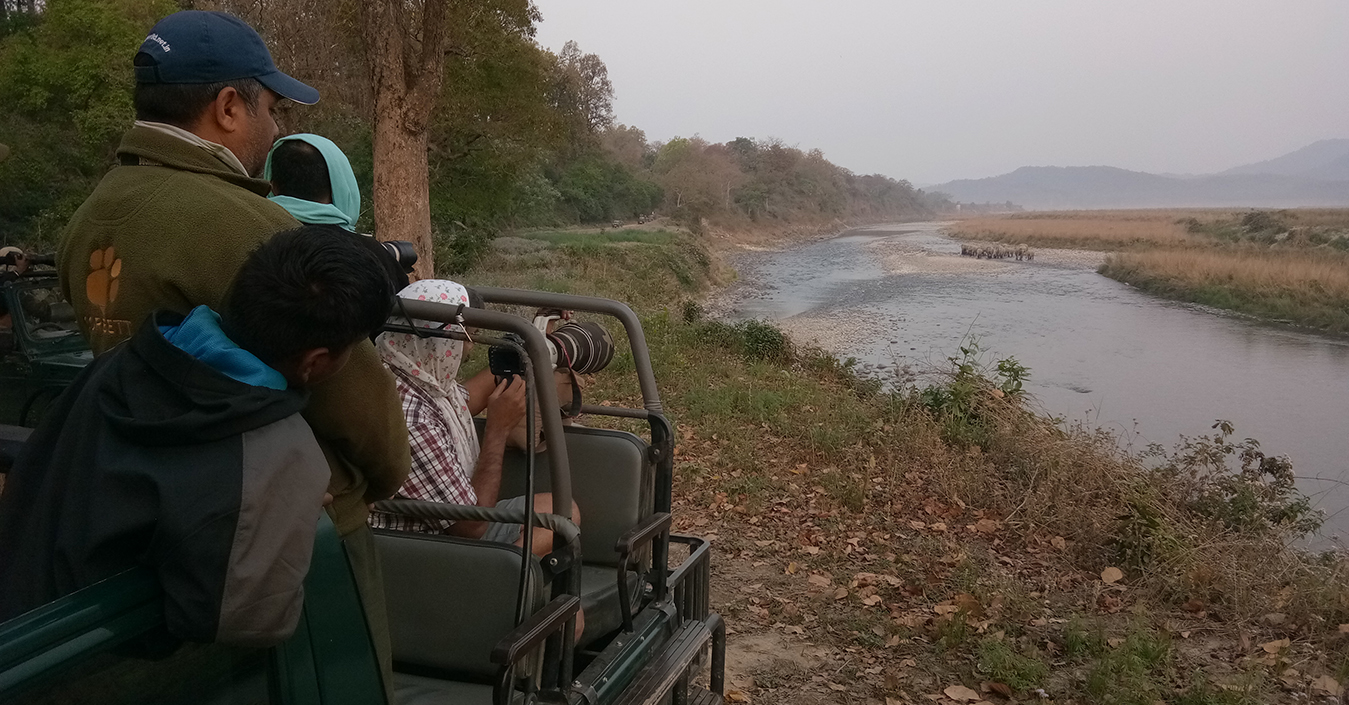
Blog Details
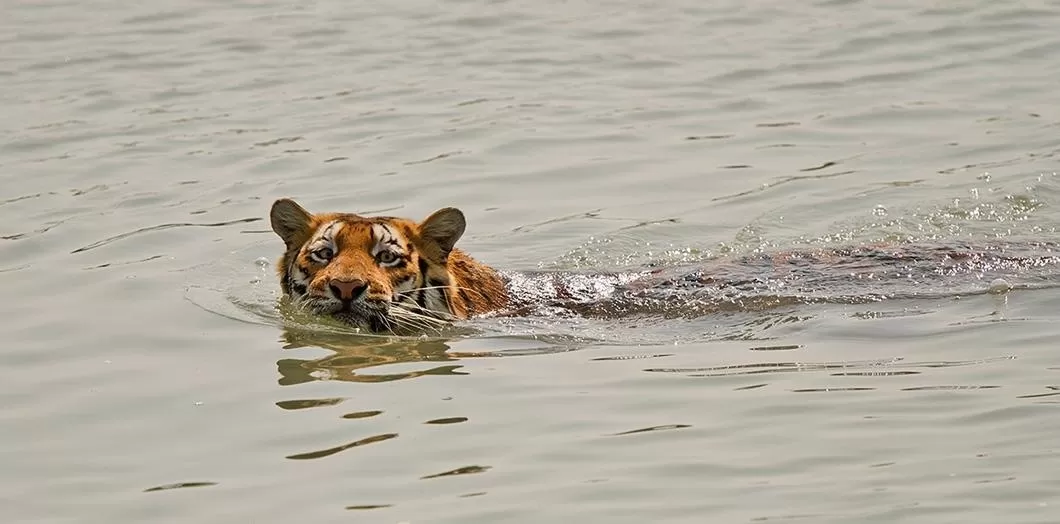
What does it take to behold a tiger in The Sundarbans of India?
Prologue:
You guys will be amazed to know that it took me quite some time, specifically 9 years of my life, to see a wild tiger for the first time. Yes, I considered myself to be a "panauti" meaning the bearer of ill omen... hey, hold not literally..but that couldn't stop me from being who I am today and today my success rate in the Indian Sundarban is 50+ tiger sightings in 400 days, spent over the last few years in Sundarbans. So how did this happen all of a sudden? Well, this ain't any magic folks this is sheer hard work, a few calculations and finally can say that luck smiled at me at last.
Before exploring the Sundarban tigers, I tried to understand the Bengal Tiger as a species first. For that I visited several Tiger Reserves in India like Bandhavgarh, Kanha, Corbett, Kaziranga, Tadoba, Bandipur, Nagarhole, Mudumalai etc. In 2009 at Bandipur TR, Karnataka I was more than overwhelmed to have finally crossed paths with his majesty and after that I was fortunate enough to follow them for the next 5 years and in 2014 I had the honour to see, for the first time in my life, a full grown, hulk-like tiger in Sundarban.
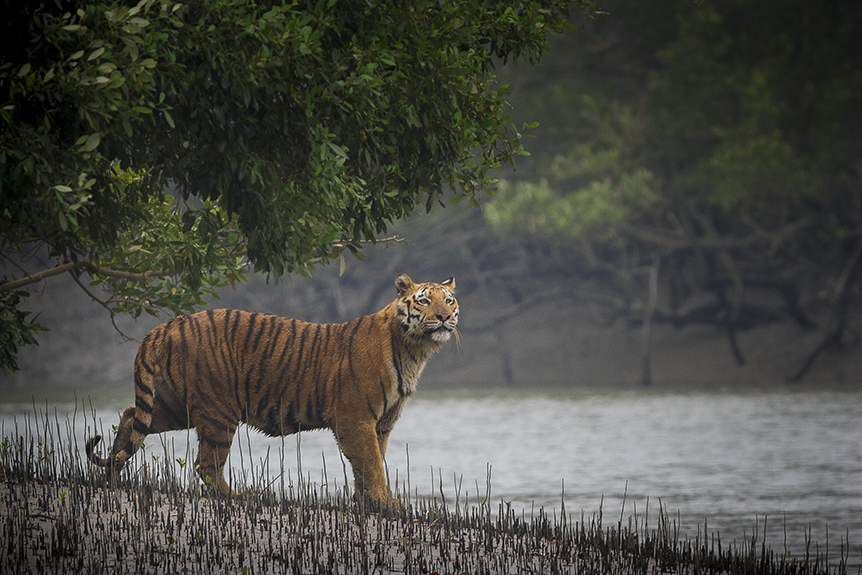
Time in the Forest:
I visited Sundarban first in 2008. It was a brief visit and was anything but a wildlife oriented tour. I stayed in Sajnekhali Tourist Lodge for one day and in the morning we jaunted in the wilderness, the sail to Sudhanyakhali watch tower was quite an experience for me. On my 2nd visit in 2011, I got a proper chance to see the forest for 2 full days but it is note worthy here that until 2014 my visits to this extraordinary land were pretty infrequent. August 2014 onwards I started spending a lot of time here. On an average I stay in Sundarban for more than half a month. There are times when I stay here for more than a month at a stretch and this has helped me to understand this forest better, much required to track tigers here.
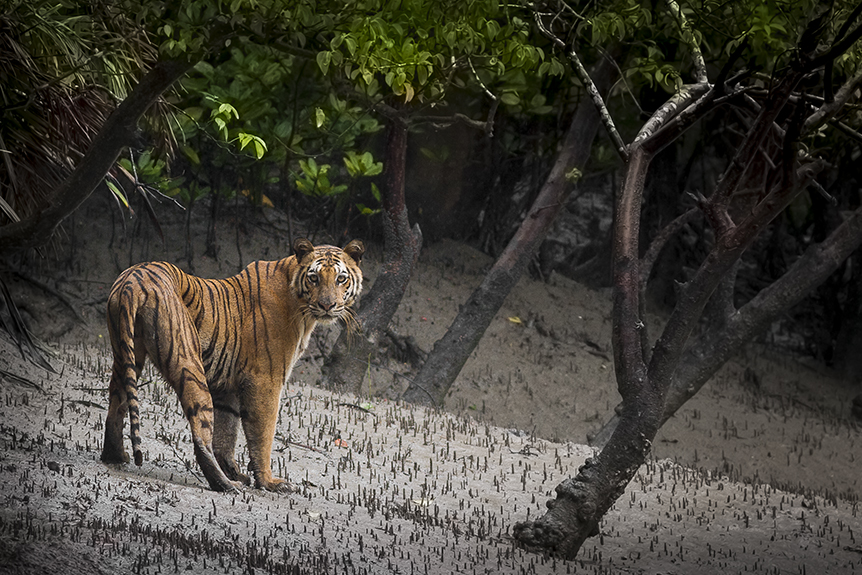
Understanding the Forest:
This was a new place and in the beginning everything seems quite impossible right? There's a sense of uncertainty, anxiety starts to give its best and I had a notion that seeing a tiger in these mysterious mangroves was next to impossible. But what made me determined and steadfast regarding this whole "finding a tiger in these mysterious mangroves" is when a friend of mine who is not that much into wildlife, saw a tiger and clicked a photograph of the same with his mobile phone, I mean how cool is that no? I now started to believe that tigers can be seen here too which is actually true.. wo kehtey hain na "kisi cheez ko dil se chaho to puri kayanat usey tumse milane ki koshish main lag jati hai" meaning? when you want something with all your heart and soul, the entire universe conspires to help you in getting that "something, so near and dear to your heart" and fortunately, in my next trip itself I met Nityananda Choukidar who supported my thought and the exploration began...
Every forest has its own set of rules as far as sightings are considered. Sundarban too has its own. The trick was to find it out. Sundarban Tiger Reserve is a maze of forested islands, ruled by the tidal water of the sea. There are 2 high tides and 2 low tides in a day at an interval of 6 hours each. The tide level and timings change every day. During the low tides the mudflats get exposed and that is when one needs to look around for the clues.
As the tide level (amount of rise and fall of water) changes everyday, there are certain periods (6-7 days stretch) in a month which is considered favorable for sightings. That period is locally called Mora Kotal or low tidal variation period. The rise and fall is minimal and hence the current too. This period falls almost mid-way between one Amavasya (New Moon) and Purnima (Full Moon) or vice versa. During this stretch one gets the maximum amount of time to explore this forest with the mudflats exposed. Each month has 2nos. of Mora Kotals. Sundarban is open round the year and park visit timings are sunrise to sunset. However, it is a complete myth that sightings will not happen during the Bhora Kotals or high tide times.
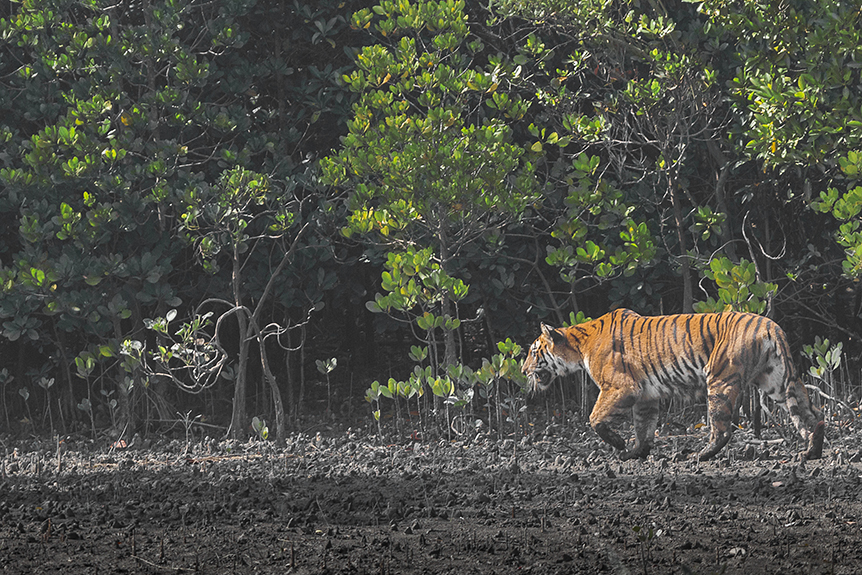
The Boat and Crew:
Now this is very interesting. As far as wildlife is concerned, for exploring Sundarbans all kinds of boats/ships cruising here are not advisable; wildlife expeditions, here, are carried out in a medium size, 4-cylinder geared boat with a good amount of space in the front of upper deck. At times it is extremely necessary to move the boat back and forth within, say… a few minutes. The boat should have enough space for overnight stay inorder to utilise maximum amount of time when inside the forest. Most of the land-accommodations are quite far away from the various entry/exit points of the park and generally speaking we try to minimise the transit time (from resort to the boat and vice versa). The boat I use has 4 beds in the lower deck with attached western-style toilet and a small bathroom. A boat-stay allows much flexibility as one just needs to come out from the entry/exit point and anchor by the nearest human habitation. It’s difficult to predict, well in advance, that where exactly the sightings can happen hence this system. There are 6 entry/exit points for tourists namely Sarakkhali, Sudhanyakhali, Khonakhali, Dobanki, Nobanki and Netidhopani. The highlighted ones are the conventional ones used by most of the boats.
Another important point which needs to be noted here is that one needs a boat where the owner is more interested in providing a good service rather than concentrating on how to save fuel. My exploration routes are always planned depending on the sighting chances, rather than the favorable current to save fuel. This definitely has a big financial impact as I need to pay much more for the boat than the conventional charges. I am lucky that owner of Sundarban Safari boat, Sanjoy Mondal has never bothered about the fuel expenses. He has always told me “Dada; don’t worry about the fuel but don’t come back without seeing a tiger”.
A good crew is also important. The main boat-man (Sareng) not only needs to be well aware of the navigation and local conditions but also has to be alert in the forest for there are too many signs; as in, the forest speaks to you. Catching those signs is very important, missing any of those can cost you the chance of a potential sighting. Same applies to the rest of the crew members too and I feel I am fortunate enough to have excellent and supportive crew members.
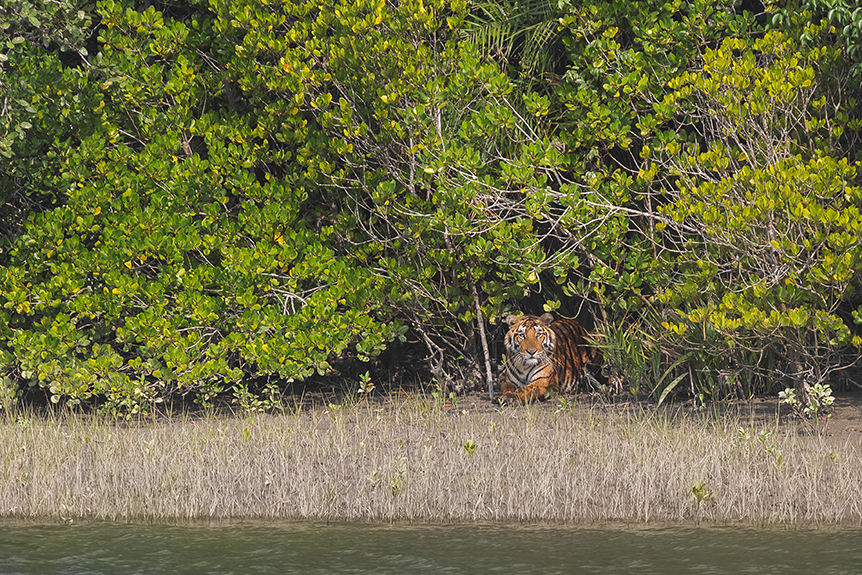
Group Size:
I always prefer small groups. Ideal is 3-4 people in a boat along with the crew members. More people means more chaos and during a sighting everybody will stand in front of the boat-man making it difficult for him to maneuver.
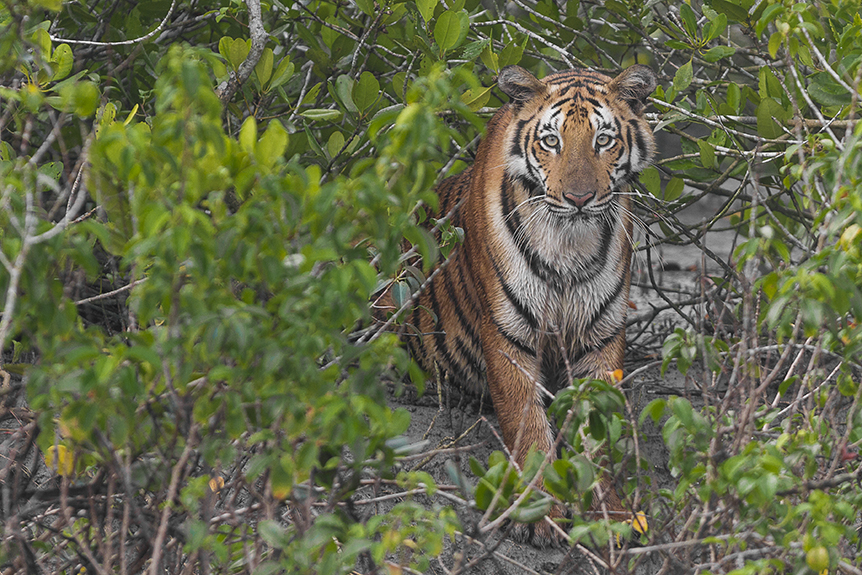
Binocular:
A good binocular is a must for exploring Sundarban. Most of the times while cruising in big rivers one needs to have the vision of a raptor i.e. to have a keen vision in order to cover vast expanses. So it is important to observe constantly what is there far away & near and be as patient as a vulture. It is also necessary to study the footprints minutely from the boat itself as getting down on the forested land is not permitted in Sundarban. There are numerous smaller creeks where tourists are not allowed to enter. A binocular helps one to scan those from far away distance.
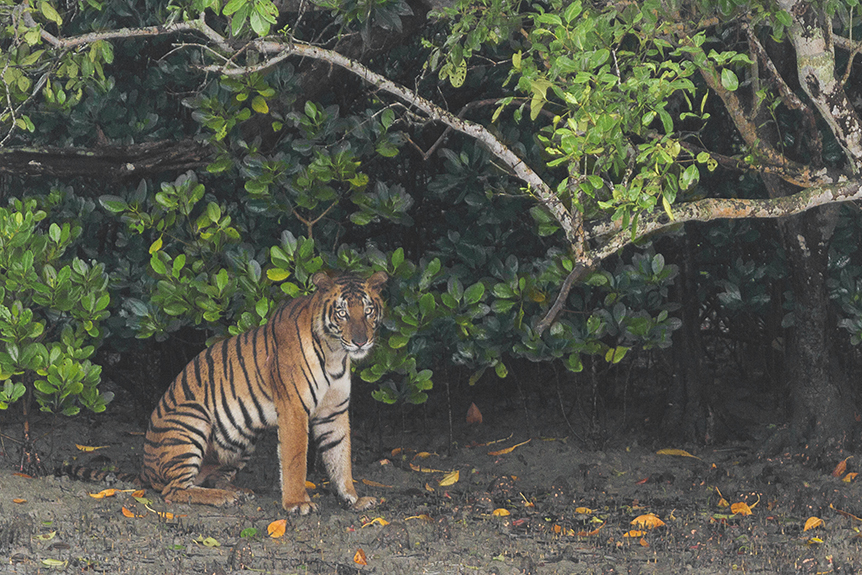
Tiger Watching:
Tigers in Sundarban can be seen either from the boat or from a watch tower. Watch towers are preferred mostly during the early mornings and late evenings or during the high tides when the mudflats are submerged. I generally don’t go to the watch towers unless I get some clue that a movement is happening near it. Speculating the movement of a tiger is very tricky as one needs to have the entire map of the tourism area embedded in the mind along with years of experience.
Most of my sightings have happened from the boat itself. The movement is restricted to the wider rivers/canals so one needs to understand about why does a tiger come to the bank of such a big water body? No, they don’t come here to drink. There are plenty of options available inside the forest for that. They come here for 2 reasons mostly:
-
Crossing the river and moving to the adjacent island
-
Walking along the bank and patroling the territory
What I have generally noticed is that the tigers spend considerable amount of time on the bank before getting into the water to cross. I don’t know why they do that, but my speculation says that they scan the entire area for possible situations before getting into the water, a place where it is extremely vulnerable. That is why it is extremely important to keep scanning both the banks with a binocular while still inside the forest.
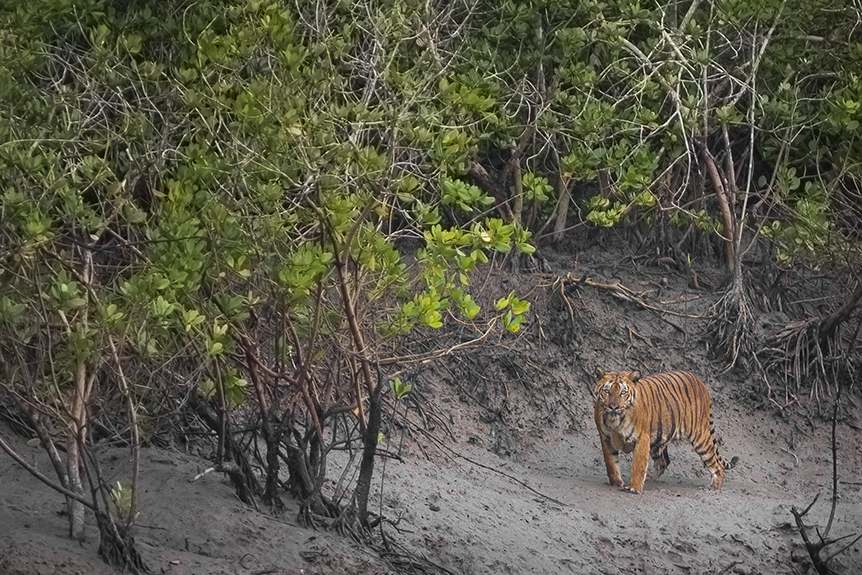
Forest Signs:
Like any other forest, here also I depend on the footprints and the alarm calls. However, footprints are more reliable as only Spotted Deer / Rhesus Macaque are available in Sundarban as far as alarm calls are considered. Now, footprints on the mud-banks look completely different from that on game tracks of other parks in India. The legs go much deeper inside the soft soil making the footprints look like big holes. In fact, for an untrained eye it is extremely difficult to differentiate between a crab hole and a footprint.
There are ways to differentiate between an old footprint and a new one and this understanding comes from years of experience of seeing them. But to put it on paper, the fresh ones will have the following features:
-
Whitish base (darkens with passage of time due to silt deposition)
-
Sharp and well-defined edges (distorts with passage of time due to tide and wind)
-
Little water inside (if it is extremely fresh where the dripping water from tiger’s body has got accumulated)
With experience, it can also be predicted that how old the footprint is. But the point to be noted here is that factors change from season to season and from soil type to soil type. In winters, on a soft muddy soil a footprint might remain for 15-20 days whereas same would vanish in 2-3 days on a sandy bank. Again, footprints tend to remain for long time during the winters whereas vanishes quickly during the summers/monsoons.
.jpg)
During the Sighting:
When a sighting happens, I always ask my boat-man not to rush towards the tiger. It’s always better to be at a comfortable distance from the tiger and ensure the animal's comfort in human presence. Believe me, once it is comfortable one can get to see it for a much longer duration. During one of my sightings we allowed the tiger to cross the canal comfortably rather than blocking its path and then it walked with us for the next 10 kilometers, 10 km.. hmm.. pretty great isn’t it?
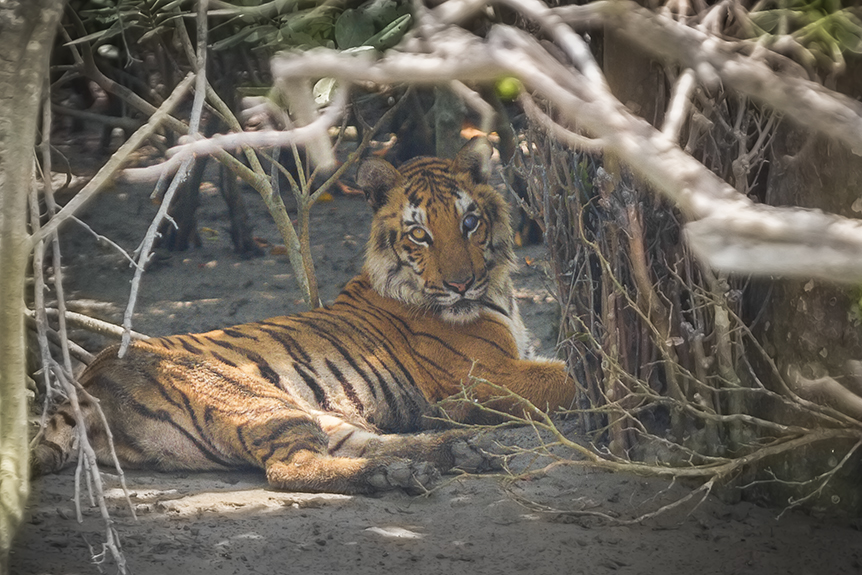
Conclusion:
Tiger sighting in Sundarban, like in any other forest, finally is a matter of luck. Even after following all these methods I have failed to see even a single individual for as long as 8 months. But, during those eight months I have had several narrow misses which made me more confident of the fact that at least the movements can be predicted. This is a cluster of extremely dense forests, hence one can search to the point where the tiger is but the “sighting” will always depend on the tiger’s wish!
0 Comments
Leave a comment
Archive
Tags
Latest Posts

Tiger Pangolin Storyline From Tadoba

The Day of the Jackal
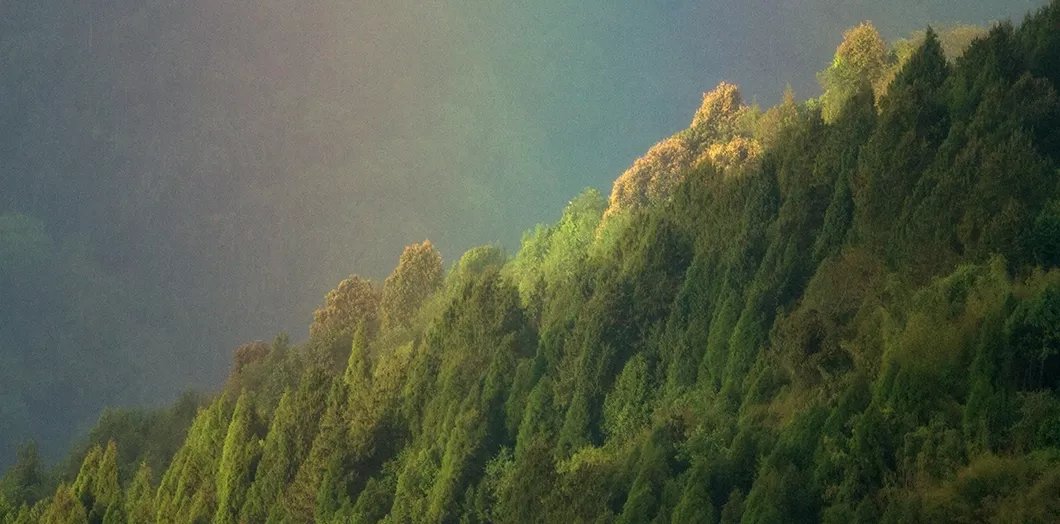
'Sikkim' Tour - Zuluk
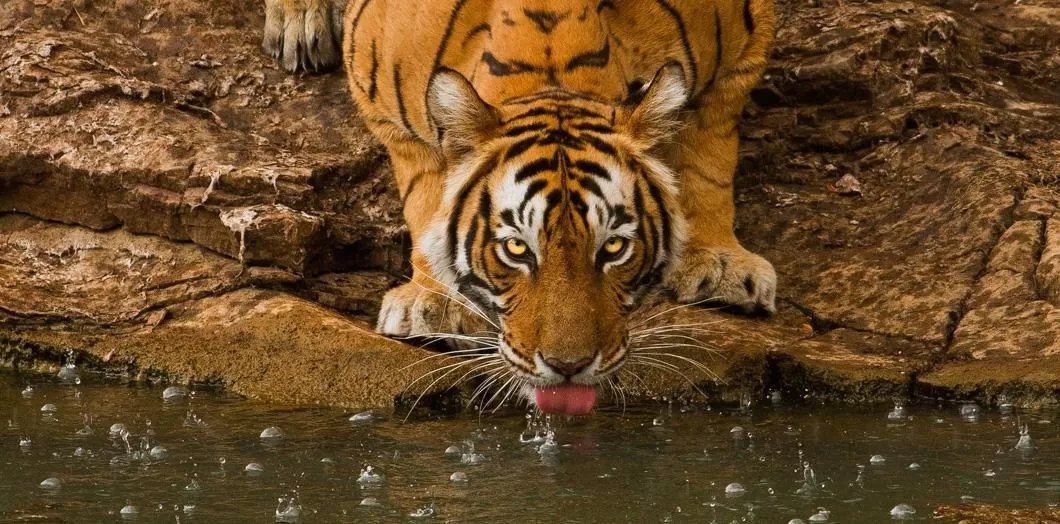
Tigress in Rain
